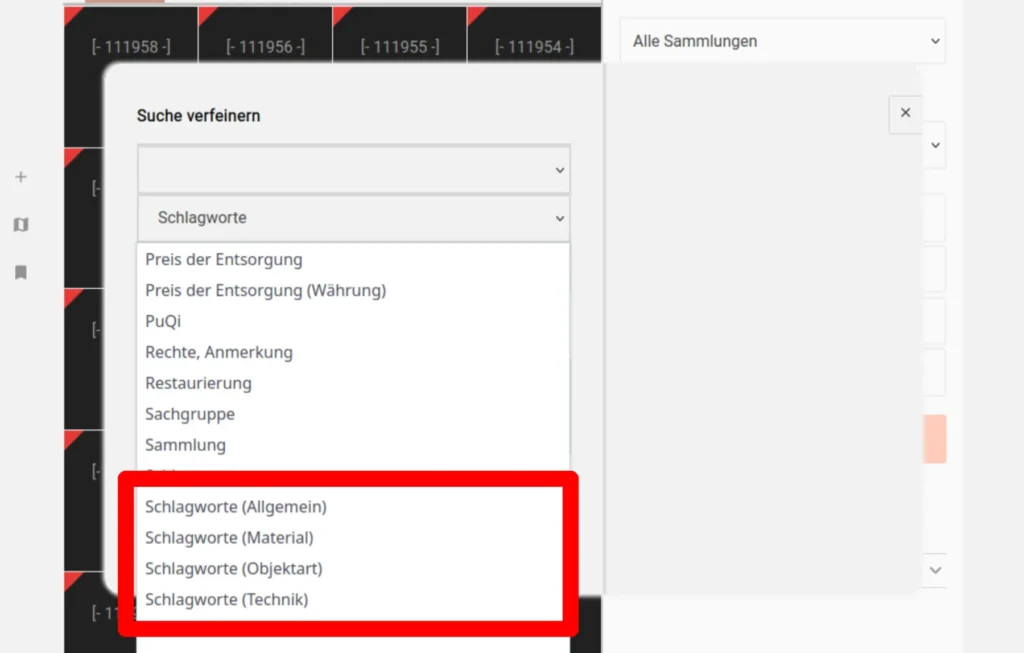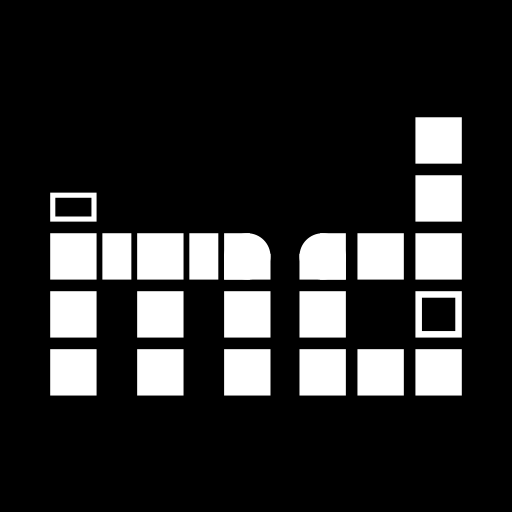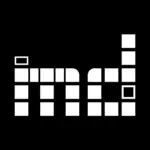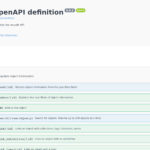… or “musdb finally supports materials, techniques, etc. from controlled vocabularies”.
At museum-digital, there are four main centrally controlled vocabularies – actors, places, times, and tags. In more traditional collection management software however, the main field to control is usually the object type (is the object a helmet or a painting?). Simple tagging of the objects can serve as a rather good replacement for a controlled set of object types if one simply repeats the object type as a tag.
As long as one only uses simple tagging, it can however do so only to some extend. If the object is a painting that displays a hammer, the object would feature the tags “painting” and “hammer”. If the object is a hammer with an engraving of a painting, it would feature the very same tags. Take the first example: If one wanted to be able to express that “painting” is the object type and “hammer” is something displayed on the object, one would either need to skip using tags again and use the dedicated fields again – or one needs to be able to categorize tags.
We doubled down on tagging by implementing a categorization mechanism for object tags while streamlining the tagging process in musdb and making it faster and easier to use overall.
The new tagging overlay
When clicking the usual link for linking (new) tags with an object in musdb, one will now be presented with an overlay that replaces the previous page of the same functionality. The layout is rather similar to the previous page – new tags and simple links to actors, places, and times are usually be entered using input fields on the left of the overlay. By typing in the relevant input field, a drop-down list appears, from which entries to be linked can be selected. A new tag, actor, place or time entry can be entered by pressing the “enter” key after typing the name. A sidebar on the right of the overlay allows the simple repetition of the last 10 tags, actors, places, or times the user linked to objects.
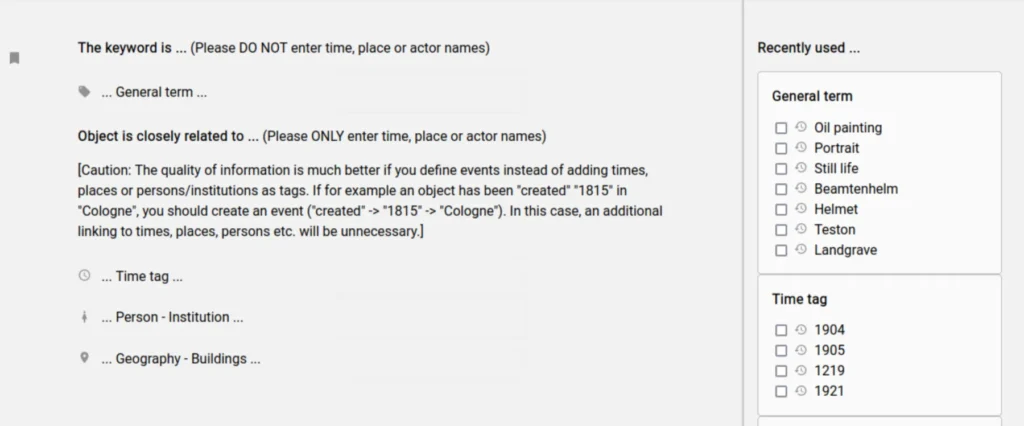
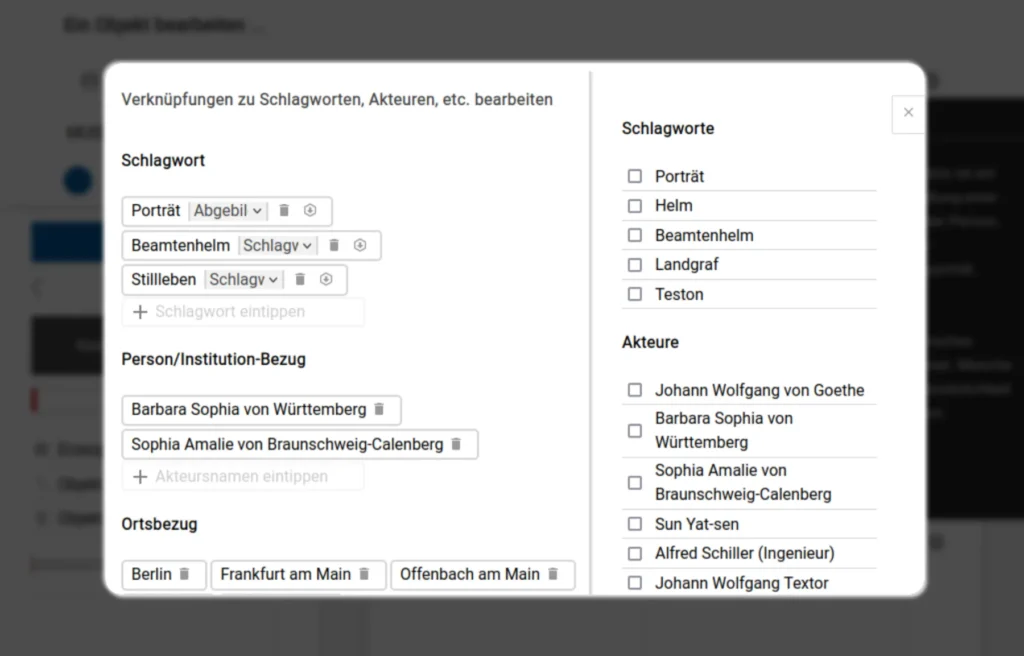
The differences between the old page and the new overlay play out on two levels. First, there is the simple fact of the new implementation moving a lot of the logic to the client side, i.e. your browser. If one only selects entries from the drop-down menus, this means that all communication with the server runs in the background. Page reloads are thus only necessary when one enters a new, thus far unknown, tags etc. As the overlay does not close after linking a tag, multiple pre-existing tags can be linked quickly one after the other. In effect, this amounts to a much smoother experience in tagging objects than before.
On the other hand, the overlay unites the existing tagging-related functionalities in one. To do so, the currently linked tags, actors, places, and times are displayed in the overlay as small tiles and can be deleted from there using the trash can icon. Tiles for tags feature an additional select field for categorizing the relationship between object and tag. By default, the relationship is set to the generic “tag”. Alternative categorization options are currently:
- Object type
- Material
- Technique
- Display subject
By categorizing the tags in the appropriate way, one keeps all the advantages the controlled vocabulary for tags brings – multilinguality, links to norm data repositories, and findability using hierarchichal searches, while now being specific about the relationship.
Additionally, another icon (the arrow downwards in a hexagon) offers narrowing down the tag to a more specific version. If an object has for example been tagged as a “portrait”, pressing on the icon will open a sidebar suggesting to replace that tag with “self-portrait”.
Effects on search
Of course, categorizing the links helps little without the relevant search options. Hence, we added five new search fields in the extended search menu: Tags (object type), tags (material), etc.
